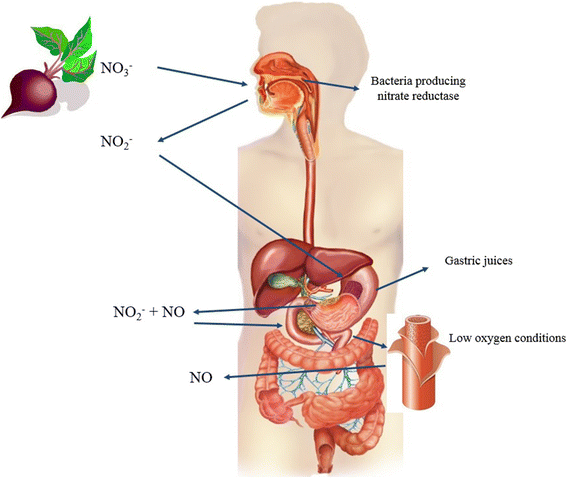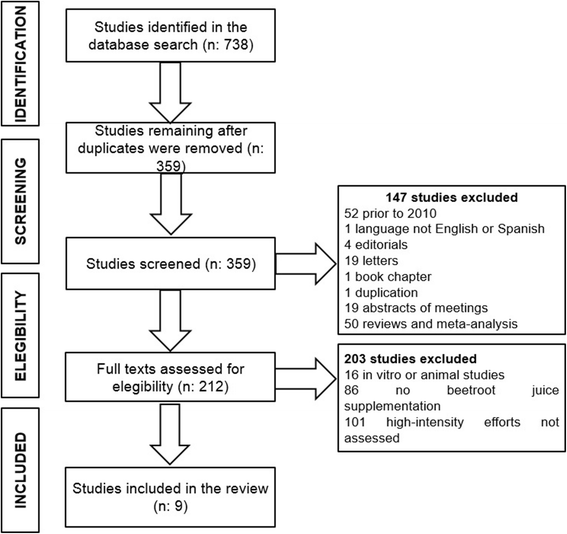Effects of beetroot juice supplementation on intermittent high-intensity exercise efforts
- PMID: 29311764
- PMCID: PMC5756374
- DOI: 10.1186/s12970-017-0204-9
Effects of beetroot juice supplementation on intermittent high-intensity exercise efforts
Abstract
Beetroot juice contains high levels of inorganic nitrate (NO3-) and its intake has proved effective at increasing blood nitric oxide (NO) concentrations. Given the effects of NO in promoting vasodilation and blood flow with beneficial impacts on muscle contraction, several studies have detected an ergogenic effect of beetroot juice supplementation on exercise efforts with high oxidative energy metabolism demands. However, only a scarce yet growing number of investigations have sought to assess the effects of this supplement on performance at high-intensity exercise. Here we review the few studies that have addressed this issue. The databases Dialnet, Elsevier, Medline, Pubmed and Web of Science were searched for articles in English, Portuguese and Spanish published from 2010 to March 31 to 2017 using the keywords: beet or beetroot or nitrate or nitrite and supplement or supplementation or nutrition or "sport nutrition" and exercise or sport or "physical activity" or effort or athlete. Nine articles fulfilling the inclusion criteria were identified. Results indicate that beetroot juice given as a single dose or over a few days may improve performance at intermittent, high-intensity efforts with short rest periods. The improvements observed were attributed to faster phosphocreatine resynthesis which could delay its depletion during repetitive exercise efforts. In addition, beetroot juice supplementation could improve muscle power output via a mechanism involving a faster muscle shortening velocity. The findings of some studies also suggested improved indicators of muscular fatigue, though the mechanism involved in this effect remains unclear.
Keywords: Beet; Ergogenic aids; Exercise; Sport supplement.
Conflict of interest statement
Not applicable.Not applicable.The authors declare that they have no competing interests.Springer Nature remains neutral with regard to jurisdictional claims in published maps and institutional affiliations.
Figures
References
-
- Paton CD, Hopkins WG. Variation in performance of elite cyclists from race to race. Eur J Sport Sci. 2006;6:25–31. doi: 10.1080/17461390500422796. - DOI
-
- Australian Institute of Sport. ABCD classification system. 2017. Available online: http://www.ausport.gov.au/ais/nutrition/supplements/classification (Accessed on 11 Apr 2017).
-
- Close GL, Hamilton L, Philps A, Burke L, Morton JP. New strategies in sport nutrition to increase exercise performance. Free Radic Biol Med. 2016;5:30–37. - PubMed
Publication types
MeSH terms
Substances
LinkOut - more resources
Full Text Sources
Other Literature Sources
Medical


